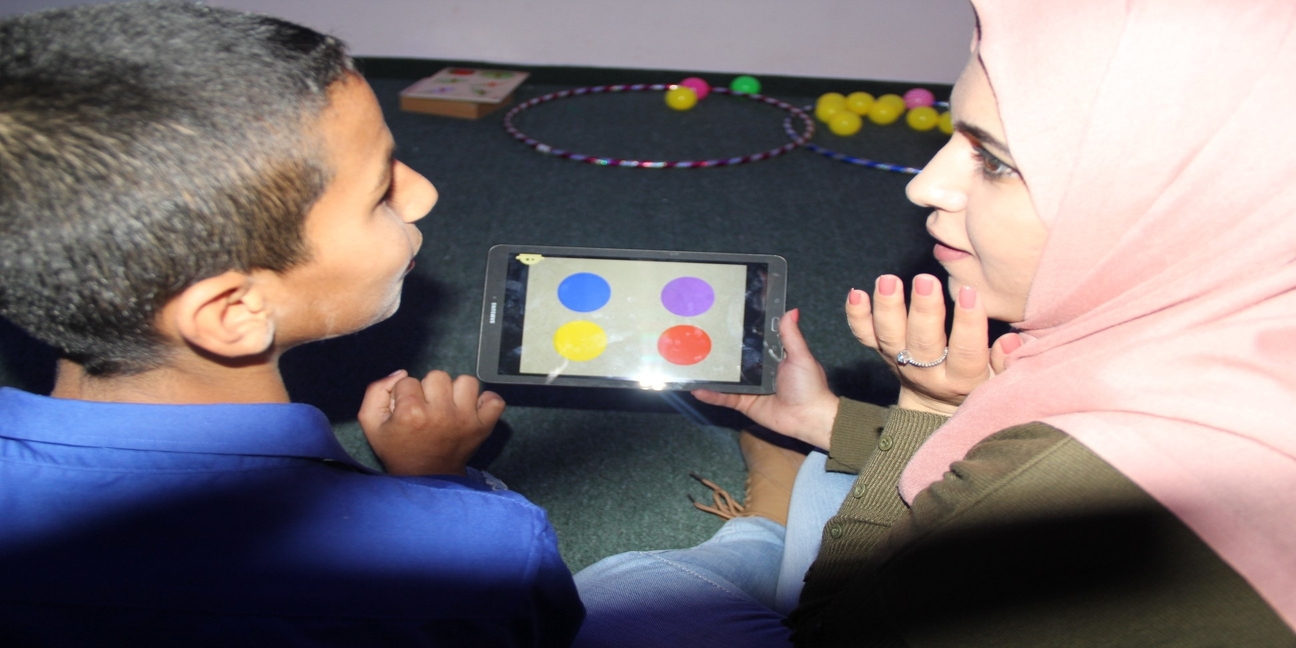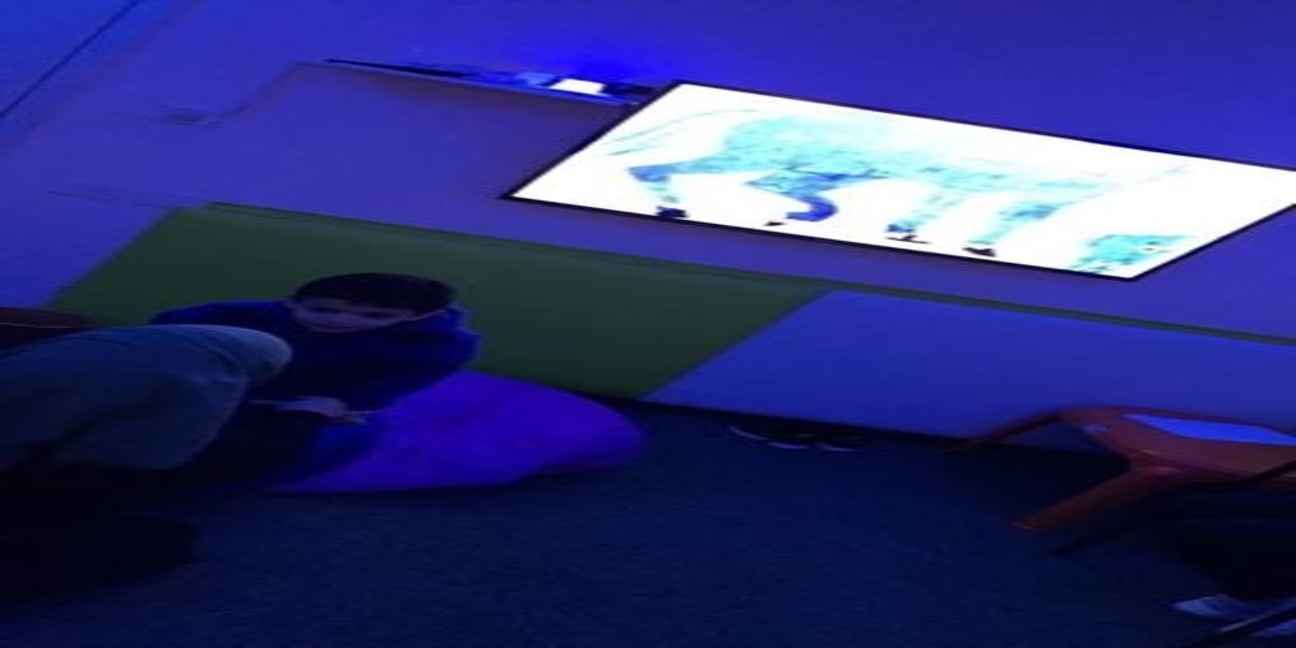




Second outside Association:
The program will link with institutions, schools, universities and destinations that deal with these children and conduct awareness meetings on behavioral disorders (autism and learning difficulties). Through them are:
- Raising awareness about autism and learning difficulties among the community.





Diagnosis: Autism and learning difficulties
(Autism diagnosis requires the participation of a multidisciplinary team; the multidisciplinary team includes various specialists working together to diagnose the condition, often involving a psychologist, an autistic pediatrician, a pediatrics specialist, a speech therapist, an audiologist, and possibly a social worker. ) Includes:


Autistic Children's Rehabilitation Program:
In the rehabilitation program for autistic patients, we strive through individual rehabilitation programs for each child to try to reduce the spectrum and work to bridge the gap between the child and the environment surrounding it. After the diagnosis stage, which aims to determine the level of spectrum in autism, and the type of mechanisms that can be implemented with the child depending on the level of age, mental, neurological and educational and the advice of doctors and occupational therapistsBehavioral therapy:
It stems from the use of adaptive behavioral adjustment mechanisms in which language and speech skills can be learned. Adequate social behavior, diverse self-care skills. Playing with appropriate games. Comparing and reading complex non-verbal skills through public tradition. No messy behavior of the child. individual educational program:
It is defined as a special educational program based on the assumption that each child has his or her unique educational needs and different levels of growth of his or her own abilities. Rather, he or she has a profile or profile that identifies his or her problems, This profile is based on a careful assessment and assessment of these abilities by a team of psychologists and educators to be the basis for planning the child's IEP. In general, autistic children's programs and curricula include the following basic aspects and options:
First, modify behavior: inappropriate behavior to appropriate behavior or at least mitigate inappropriate behavior
Second: Social skills: Focus on this aspect and encourage and promote any behavior of the child in social communication.
Third: Language skills: Learn the most important words for the connection, demand, acceptance and dealing with the ocean
Fourth: Music therapy: Music therapy is used in many different educational situations with autistic children. It may be used to teach cognitive aspects
Fifth: motor skills: to enable him to do things his daily life in a proper manner, and as the child autistic, some forms of motor behavior that hinders his educational ability, such as the behavior of flutter or swing hands and fingers
In addition to treatment by playing and water and the organization of routine and academic course depending on the situation. This program introduces the child's unifying world and exploits its strengths, such as its attention to detail and its love of routine. The program prepares the child for the future and trains him on his own. The stages of treatment are supervised periodically by the doctor, occupational therapist and special education specialists.
Sensory therapy through sensory rooms and boxes:
The sensory motor room is the first stage for any child with any kind of problem such as development delay, ASD, Learning difficulties, CP children. Because the development of the child start in moving and then the child begin to search and to explore the world around him using his sensory system, so it’s important to begin in the therapy with the sensation to let the child explore his body and the room around him. Our sensation consist of 7 sensory systems: touch, taste, smell, sight, hearing, vestibular and stereognosis. One of the main ASD children problem is the sensory system that make the child always busy in his sensory problem and further that he can’t make any communication with other; by the sensory games that given to the child and make him calm the first communication with the therapist begin. Because every ASD child have a specific sensory problem,it is very important to have a room that have all the child sensory room that the child need such as swing, physio-ball, ladder, cushion, brushers for teeth, touch items, good light, lantern…etc so the therapist can check all the child sensory system and then start to interact and communicate with the child by the sensory game that the child prefer.
Rehabilitation Program for Children with Learning Disabilities:
In the Learning Disabilities section we aim to aspire to prepare the class of students with learning difficulties to be a useful group in the society, a partner, productive, creative, to exercise its life properly as other groups and members of our Palestinian society. Our staff will work with users through sequential stages, especially for each user according to their needs and abilities, strengths and empowerment points. After conducting an educational, psychological, behavioral, pronunciation, and functional diagnosis, then analyzing these diagnoses to determine the abilities and needs of the beneficiary to prepare an individual plan for him to work with him during his presence in the association. The aim of the diagnosis is to make sure that there are learning disabilities in the users who will be served by collecting information through several channels. These channels provide great information services to the diagnostic team, especially the learning disability teacher, prior to diagnosis. An individual education plan should be prepared for each beneficiary who receives program services based on academic and non-academic strengths and abilities, taking into account the delay in evolutionary skills, if any, and providing the user's tutor with a copy of the individual educational plan to form a stable partnership between the parents and the institution in the interest of the beneficiary. We will also make periodic evaluations of the beneficiaries for two evaluations each year and this evaluation shows the development and progress of the user and the success of the individual plan that was prepared for him.
Services basket in the section:
- Psychological assessment and follow-up: - This assessment by a specialist psychologist is the reference on which we depend on describing the situation and determining the abilities and needs of each beneficiary.
- Educational evaluation and follow-up: - Through interim evaluations and periodic staff meetings to discuss the development and performance of users.
- Speech therapy: - Through a speech therapist will work with the users in the alleviation of speech disorders have also improve their expressive and verbal abilities in different ways such as games, stories and many more
Functional treatment: Activities that enable them to learn or develop life skills, for example: the activities of the school and education, and how to creativity and fun is like playing in various areas and aims to self-reliance to the maximum and increase independence in all areas of life such as personal care From eating, drinking, using pigeons, dressing, etc.
Behavioral follow-up: - By monitoring behavior and promoting it in special ways if it is positive, whether negative, or by using appropriate behavior modification methods and behavior to try to terminate it.